Color theory has never been so enjoyable to learn and create! Elementary age students will love drawing and painting this magical Color Wheel Umbrella. This project covers Common Core Standards for Science for grades K-2 which can be found at the end of this lesson.
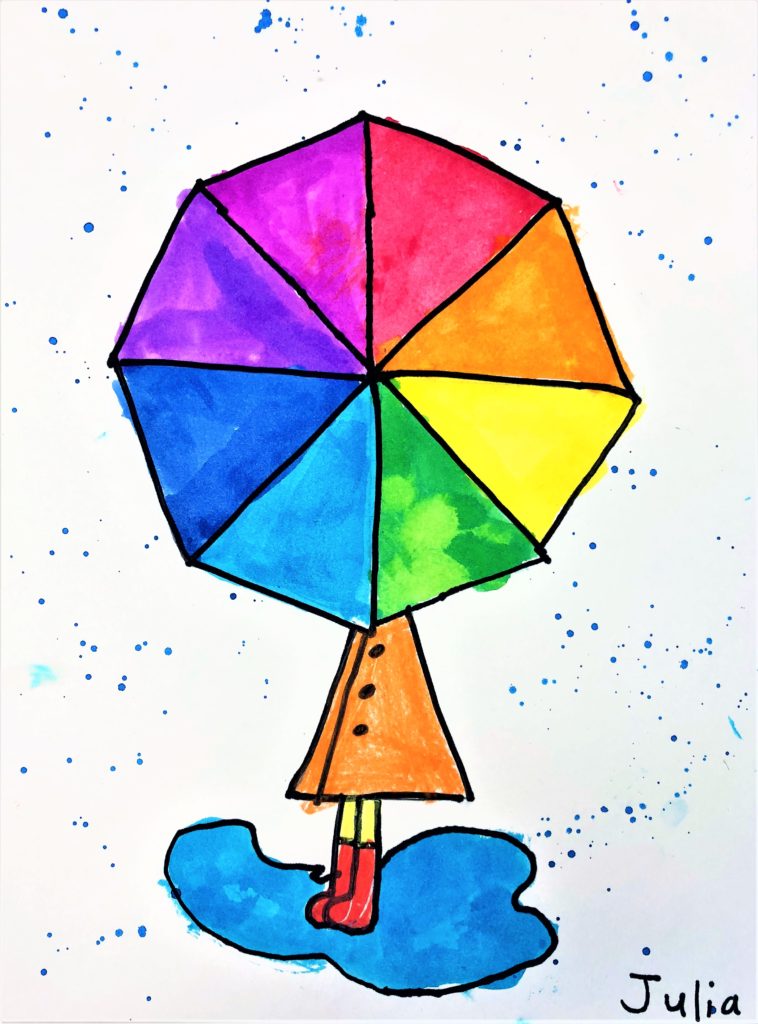
Grade Level
Kindergarten, 1st, and 2nd – The examples in this lesson are by 2nd graders
Objective
Students will draw and paint an umbrella color wheel.
Time
6 – 30 min lessons
Materials
- Pencils
- Crayons
- Template ruler (read below for description) Card stock cut into 6″x2″
- Black Sharpie Marker – Sharpie Permanent Marker, Fine Point, Black, Pack of 5
- 9×12 Watercolor paper – Canson (100510941) XL Series Watercolor Pad, 9″ x 12″, Fold-Over Cover, 30 Sheets
- Brushes – Acrylic Paint Brush Set, 1 Packs / 10 pcs Nylon Hair Brushes for All Purpose Oil Watercolor Painting Artist Professional Kits
- Liquid Water Colors – Sargent Art 22-6010 10-Count 8-Ounce Watercolor Magic Set
- Or this mini version for homeschooling – Sargent Art 22-6210 10-Count 4-Ounce Watercolor Magic
- Kleenex for blotting paint
Inspiration/Artist
I was inspired to make this lesson from this site: Click Here
And also here: Click Here
Instruction with Questions
Day 1
Begin by reading these one or two fun books. You may read one or two today and save others for a follow up day:
“Mix It Up” by Herve Tullet: Click Here
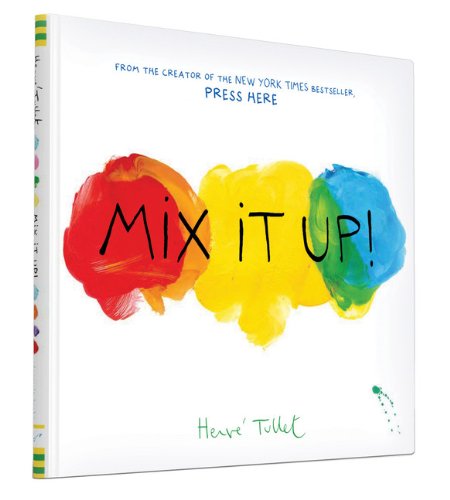
“A Color of His Own” by Leo Leoni: Click Here
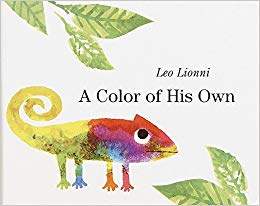
“The Day the Crayons Quit” by Drew Daywalt: Click Here

“Babar’s Book of Color” by Laurent de Brunhoff: Click Here
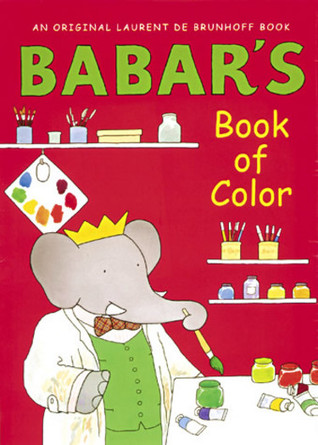
Next show a few videos.
The Colors Song | The Colours Song | Scratch Garden: Click Here
Sesame Street: OK Go – Three Primary Colors: Click Here
The Color Song: A Funny Song: Click Here
These next two are totally optional depending on your time frame.
Brain Games – Visible Spectrum: Click Here
As a fun end to the day, I have them create the colors with this activity. It only takes a few minutes and is a huge hit!
Use this Color Theory for kids inspired by Disney PowerPoint Presentation: Click Here
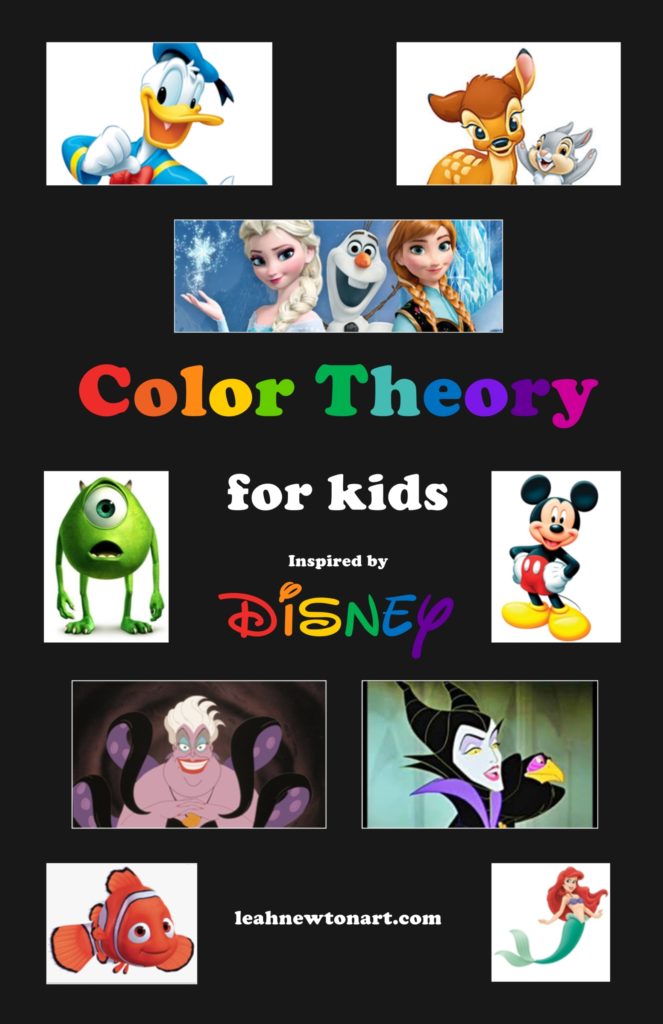
Step 1
Shaving Cream (Dollar Tree) – Hint: Do not put more than maybe a cup worth into a sandwich sized baggie.
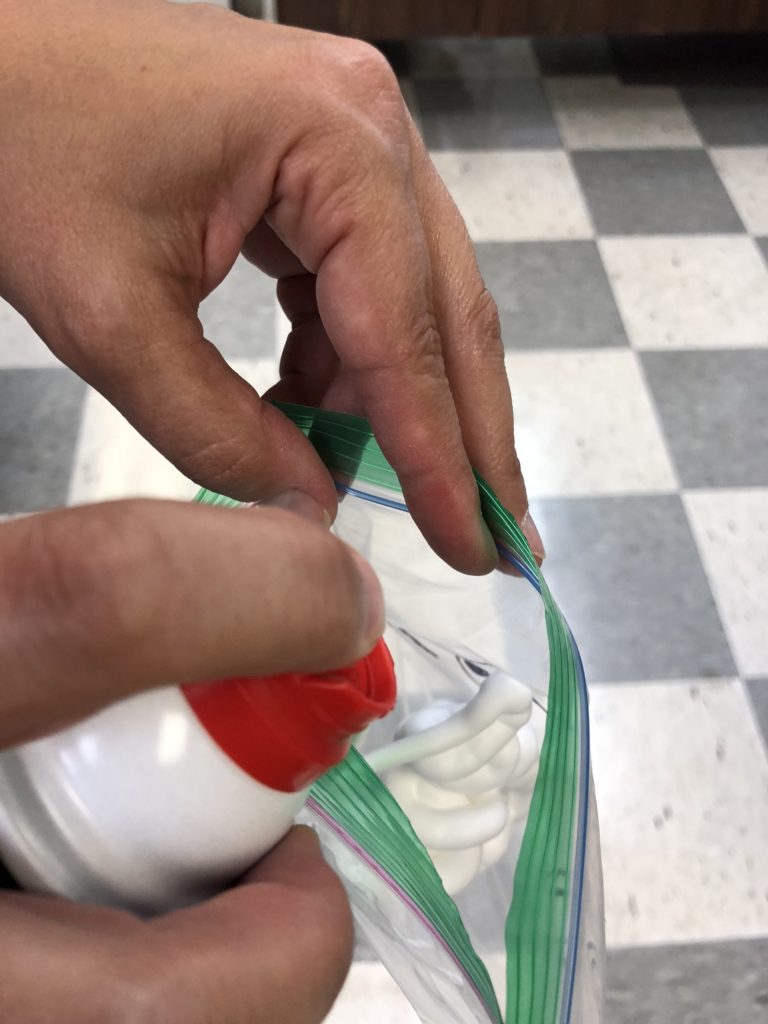
Step 2
Food Coloring – They pick 2 of the three primary colors; red, yellow, blue


Step 3
You can already see the colors mixing which is very exciting! I recommend clearing as much air out of the bag as possible before you zip it closed. This will prevent the bag from popping and shaving cream oozing out. This picture demonstrates the color mixing and the potential for ooze.
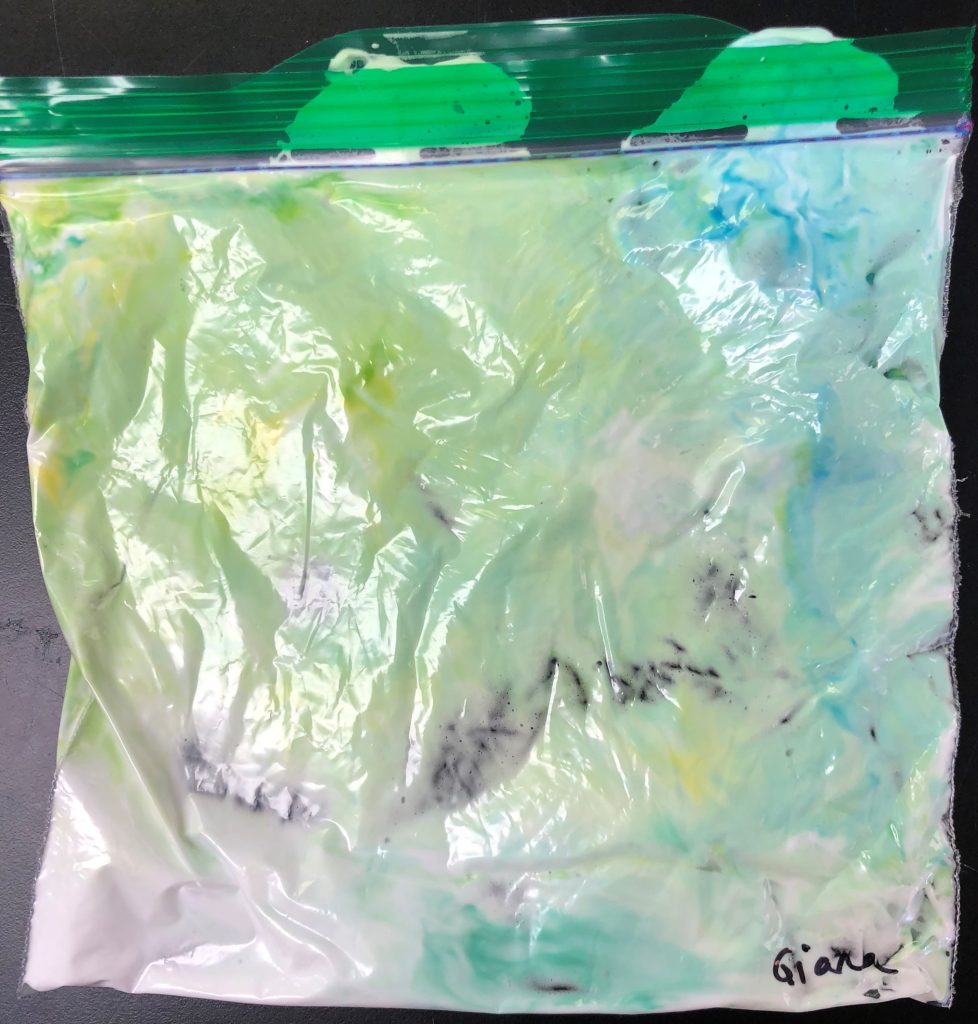
Day 2
I created this power point using Disney characters to reemphasize Color Theory. Ask the students to list at least one Disney character that represents one of each of the types of Color Theory you are learning. Then, show them the power point to really reinforce the vocabulary. Click Here
*Primary
*Secondary
*Neutral
*Complimentary
*Analogous
Another idea is to use this color wheel and have them color in the areas with the appropriate color. Click Here for the PDF.
Day 3
I highly recommend having a day when you practice this process first. I created ruler templates for them by cutting a 6×2 inch strip out of heavy card stock. This would be a great unit to introduce a ruler, but 2nd grade is still a little shaky on this concept so I recommend this plan instead. Heck, my 8th graders are shaky on using a ruler. Hahaha. I guide them through the process on the white board and we do it step by step. Once they get to the part where they connect the lines around the umbrella, I allow them to choose if the lines curve or are straight. I have classes that are able to practice and then jump right into the final draft, and other classes that require another day.
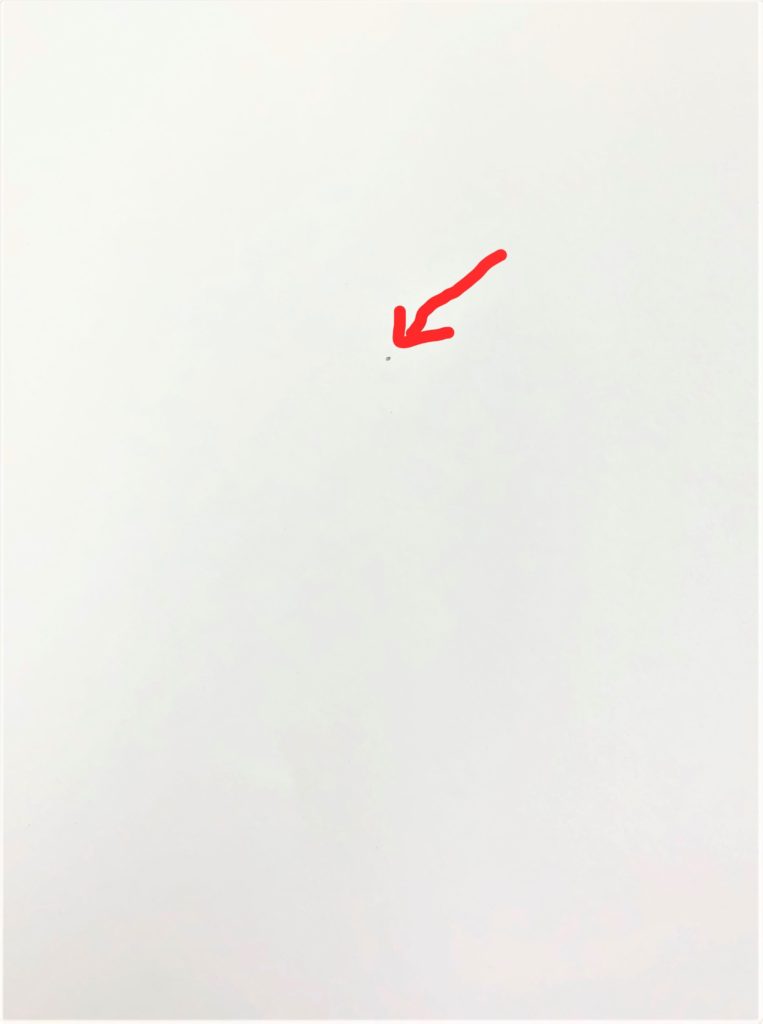
1 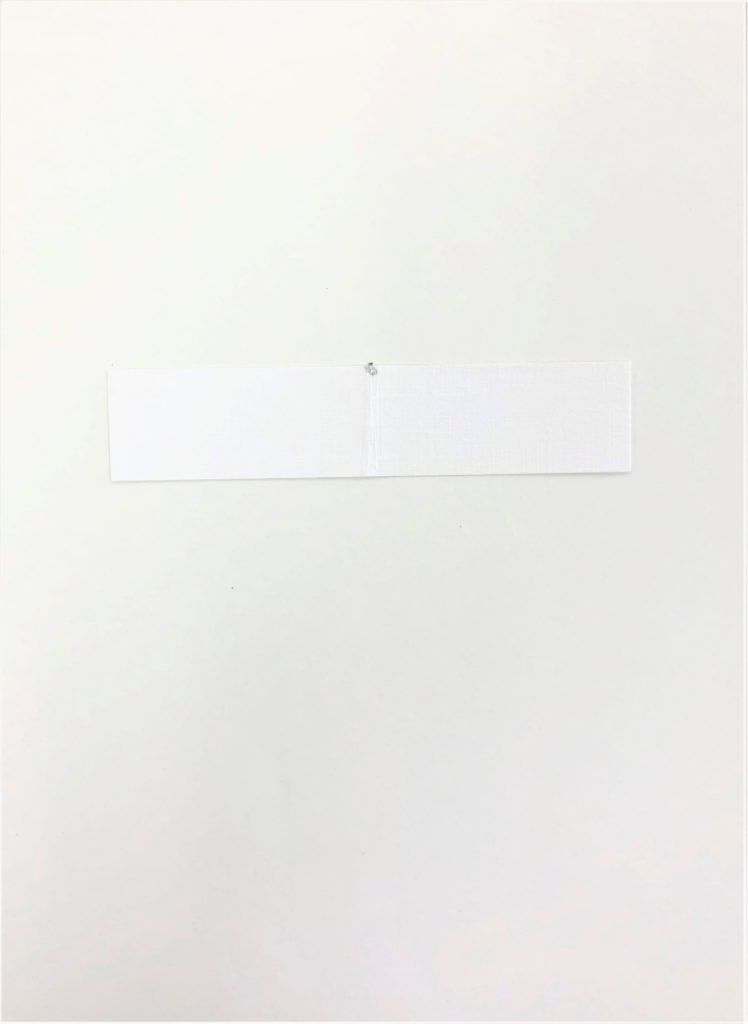
2 
3 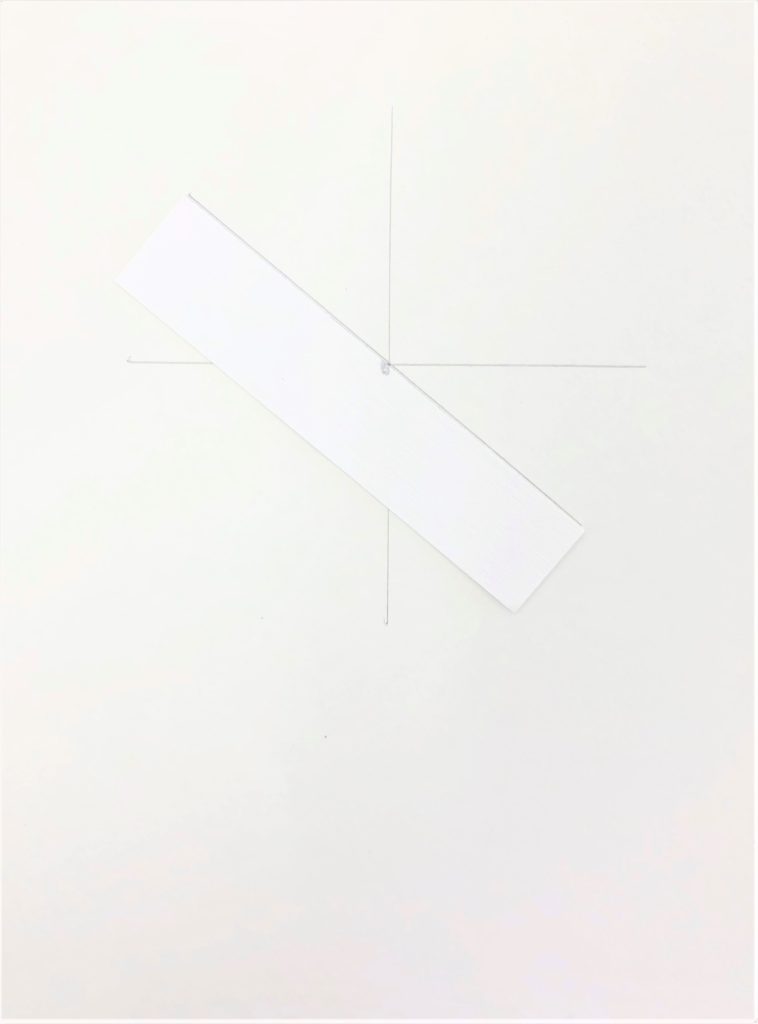
4 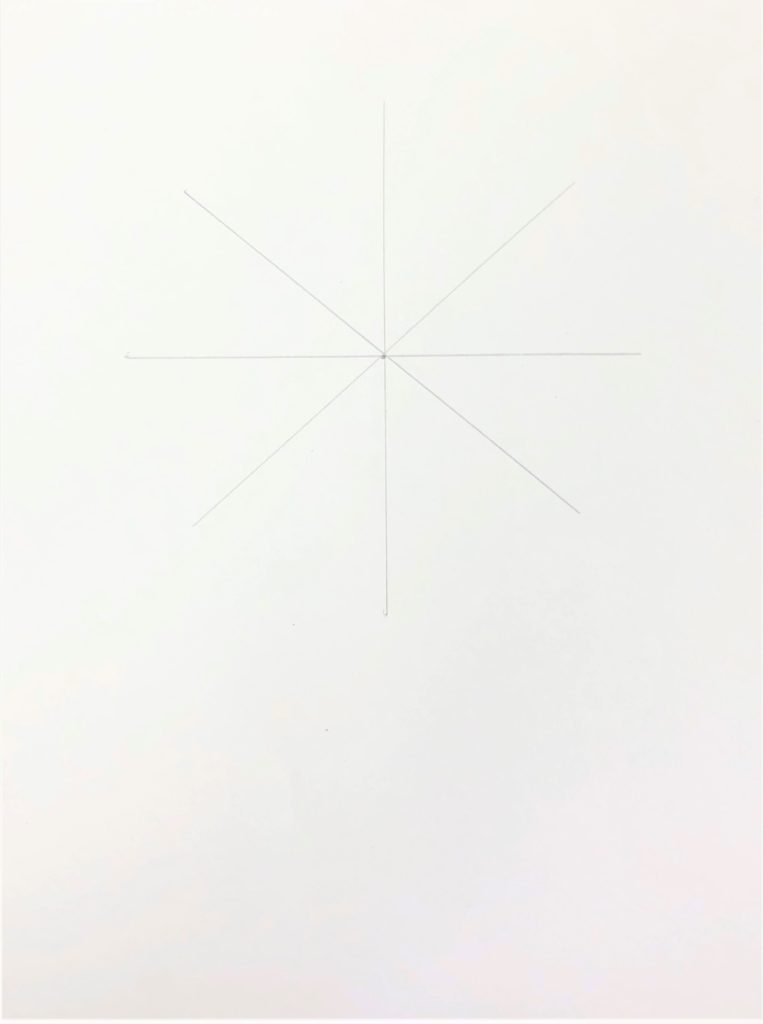
5 
6
Day 4
Assuming they got their final draft completed, we move onto drawing the human underneath. I talk them through how men can wear long raincoats and boots. So this isn’t necessarily a dress we are drawing.
I do an example on the board and we talk about how things look when viewed from the side. Like the buttons not being down the middle. We also look at how wide the person should be. I draw several that are not correct and they think it is silly and hilarious…and then some of them draw them that way, but this is a good process for their brains. I tell them that even adults often draw things small because it feels safe. So first we draw the coat.
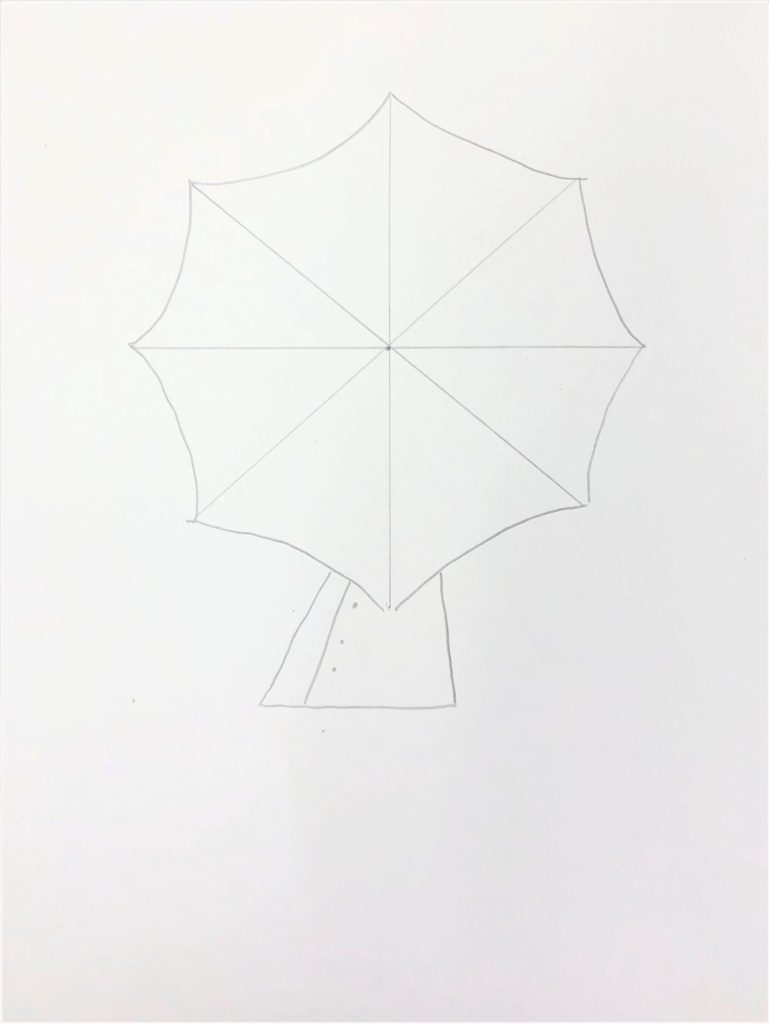
Next, add the boots. I show them how to make three lines for the legs and then make one boot look like it is behind the other boot. I also guide them in making the puddle. Not too wavy, and not too jigjaggy. I also show them how to make it look a bit oval so it would look like a circle from above.

If they finish all of these parts, and there is time, cover all the pencil lines in sharpie marker. I also have them color the coat, legs and boots. These are done with their choice combo of red yellow and orange. This is a great color theory moment to highlight warm and cool colors with the rain.
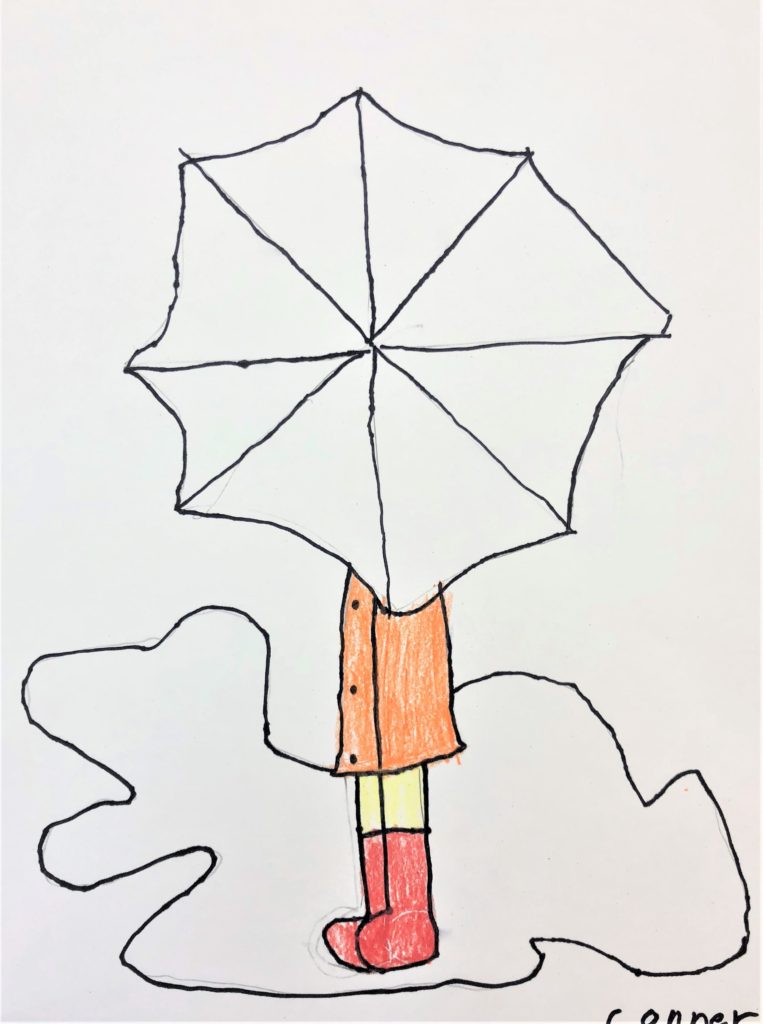
Day 5 and 6
Each group will take a different amount of time to get here and also to proceed. I set out a row of paints.
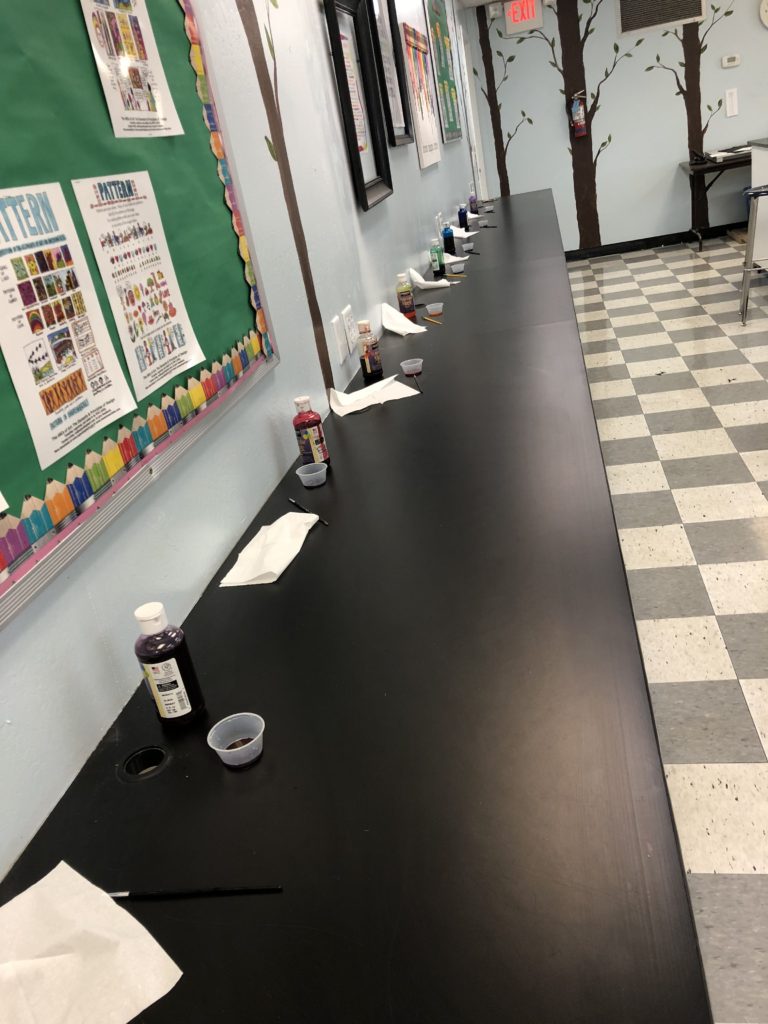
I have them start with the magenta color and then they can work around the wheel cleanly in order.
When they reach the end I have another turquoise waiting for them to add to their puddle. I quickly help them add splatter paint by covering the wheel with a 6″ diameter piece of paper. Voila!
Here are some finished Color Wheel Umbrella pieces!
Common Core Standards
Kindergarten – Science – Earth Science
3. Earth is composed of land, air, and water.
b. Students know changes in weather occur from day to day and across seasons, affecting Earth and its inhabitants.
Grade 1 – Science – Earth Sciences
3. Weather can be observed, measured, and described.
a. Students know how to use simple tools (e.g., thermometer, wind vane) to measure weather conditions and record changes from day to day and across the seasons.
b. Students know that the weather changes from day to day but that trends in temperature or of rain (or snow) tend to be predictable during a season.
Grade 2 – Science – Investigation and Experimentation
4. Scientific progress is made by asking meaningful questions and conducting careful investigations.
a. Make predictions based on observed patterns and not random guessing.
b. Measure length, weight, temperature, and liquid volume with appropriate tools and express those measurements in standard metric system units.
c. Compare and sort common objects according to two or more physical attributes (e.g., color, shape, texture, size, weight).
d. Write or draw descriptions of a sequence of steps, events, and observations.
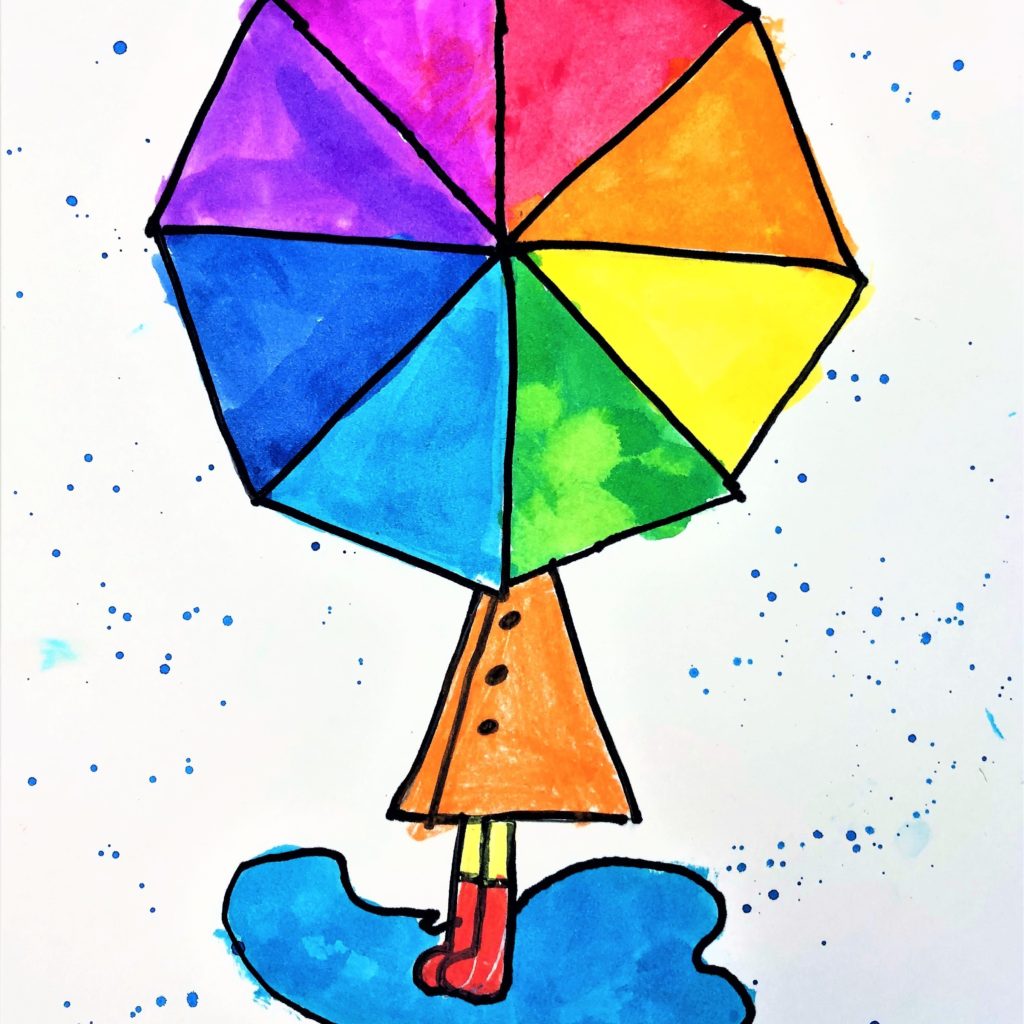

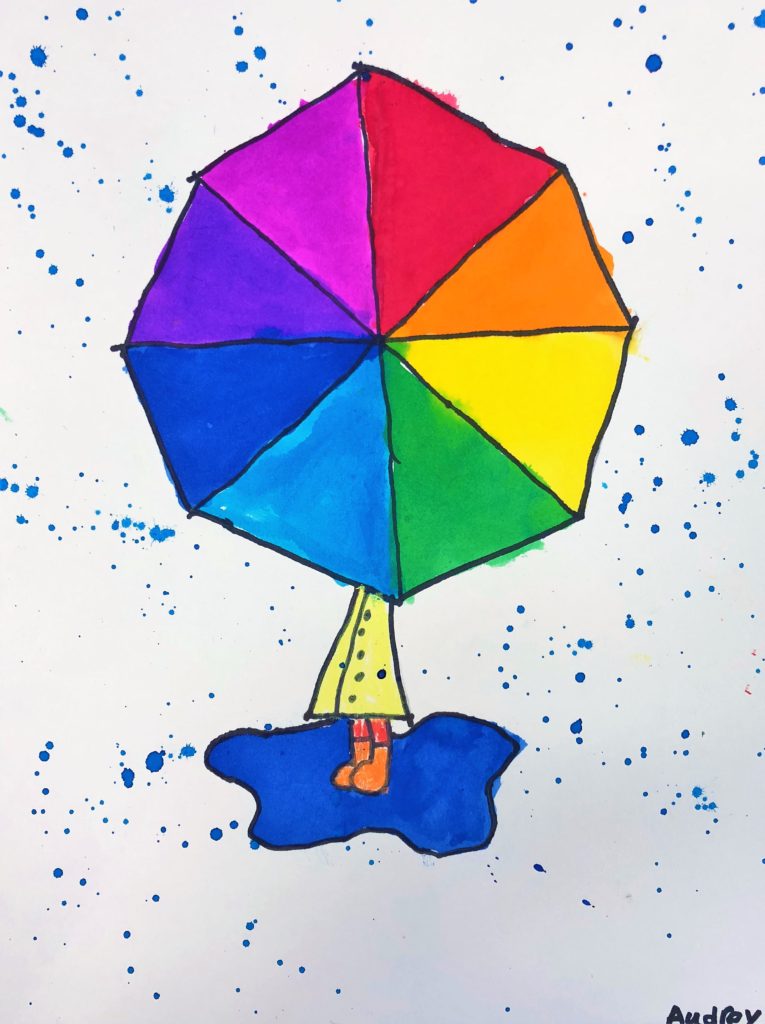
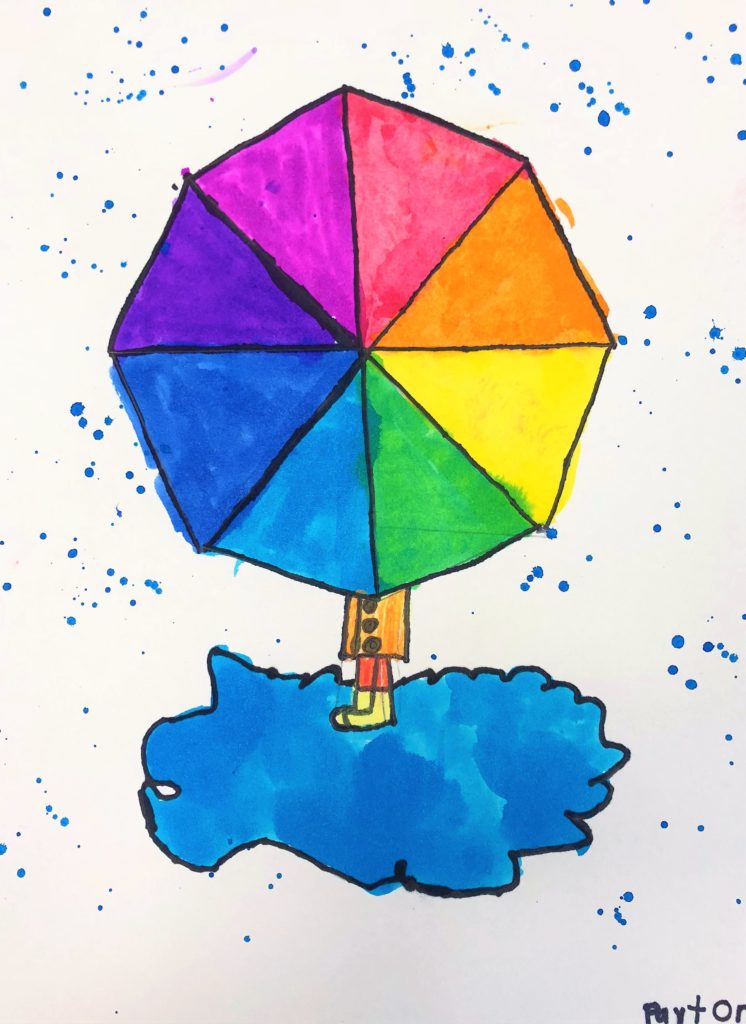
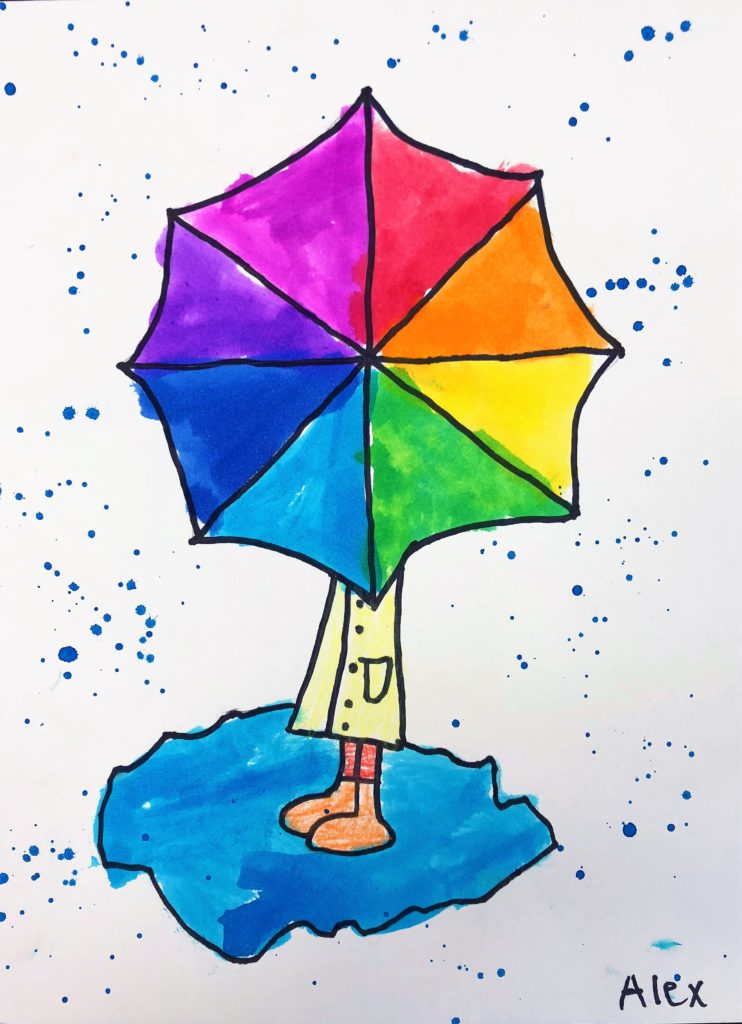
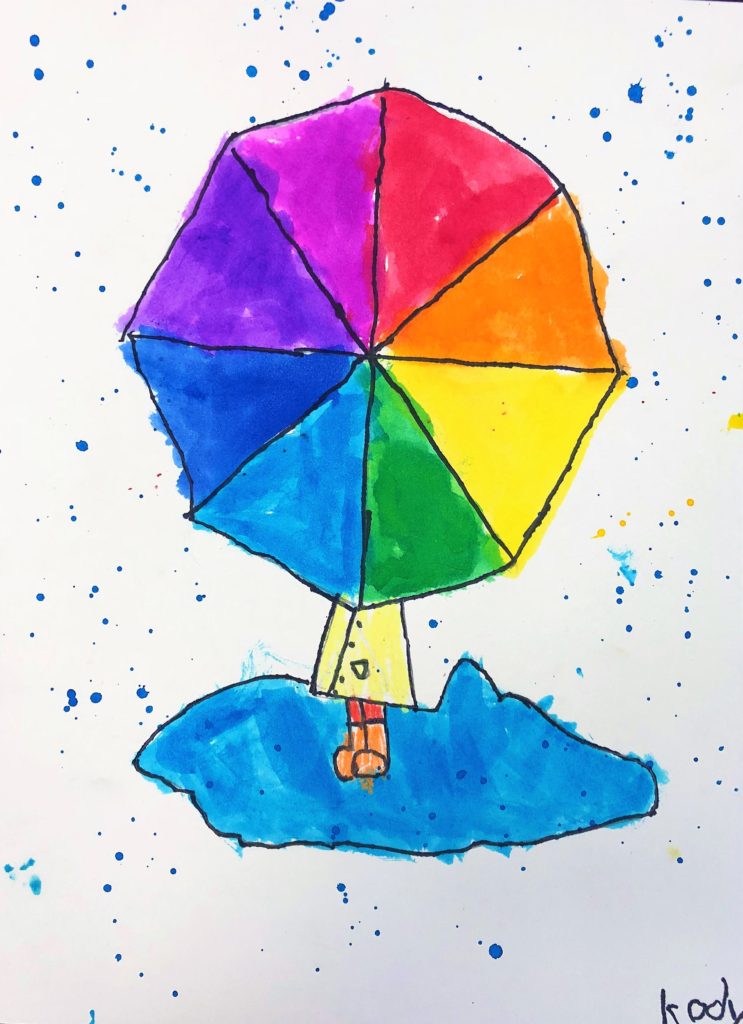


[…] Learn more: Leah Newton Art […]